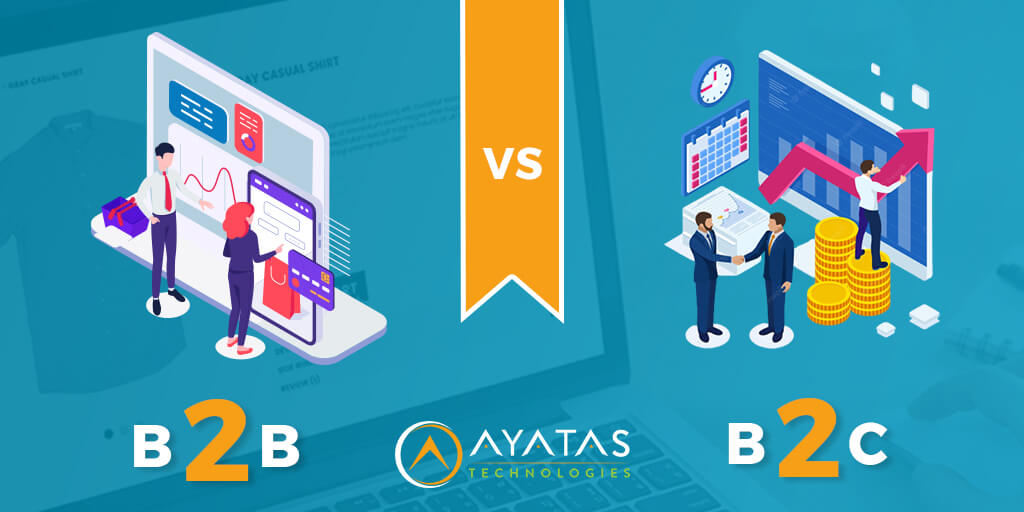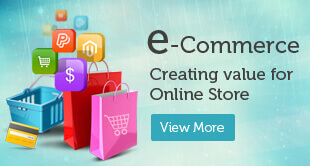
B2B vs B2C Website Design
An effective website is crucial for generating revenue and meeting customers’ requirements for any business. By visiting any business website, people get to know more about the company’s offers and, at the same time, make purchases on the website. If you are trying to build an eCommerce website, it is important to know whether you are selling to customers or businesses. To make the most of your website, both the B2B and B2C sites need to be clear, concise, and have a pleasant design to attract more customers. At this point, it is to be noted that the needs of customers and businesses are different, so some significant factors must be considered before designing the online store. If you are any business person looking to build an online store, read this article to learn more about B2B vs B2C website design and the details.
What Are B2B Sales?
B2B stands for Business to Business, and as the name suggests, the transaction is done between two companies or businesses. A company that needs to establish itself in a new office has to consult another company for the supply of materials, furniture, and other entities. So for a business to exist, there is a need for another company that can supply all the needs or requirements.
What Are B2C Sales?
B2C is business to consumer, providing all the products to the end customer. In this type of business, all the companies try to attract consumers through advertisements and commercials.
Key Differences Between B2B vs B2C Website Design
1. The Target Audience
It is important to know the target customers to start any website design. When the business has a clear idea of target customers, it becomes easy for the designers to create an image and tone of voice that appeals to the customers.
When speaking about B2B websites, you will interact with highly educated professionals who already know the product or service. The main aim is to show them how the business can help to achieve better results.
On the other hand, customers visiting B2C websites make decisions based on logic, benefits, and information provided about the products. Customers are often influenced by emotion and always look for quick solutions. B2C websites must be designed to impress the visitors so that a purchase is initiated from their end.
2. Purpose Of Website
B2B websites should be able to solve various companies’ complex and time-consuming problems. On these websites, the main aim is to sell products to a decision-making consumer, and it is important to explain the solution, how it works, and address the specific pain point.
On B2C websites, it is quite easier to impress the customers as most of them come to make a purchase to fulfill their present needs. Many eCommerce websites use this to exploit customers by encouraging conversions.
3. The Design Elements Used
B2B websites are mostly presented to high-professionals, so there is less scope for adding illustrations and attractive images. Compared to B2C websites, B2B websites have more information that the company representatives read.
In B2C business, many companies offer discounts or offers, so designers are under high pressure to create websites to grab consumers’ attention. For B2C websites, there is an option to add eye-catching images to attract more customers.
4. Purchase Process
B2B purchase process involves many steps like form filling, personal interactions, proposal evaluation, approvals by higher authorities, and many more. While making a purchase, any company follows certain protocols before confirming the orders. So to make B2B purchase successful, the website must have details regarding all these steps and follow the protocols. B2B websites must be able to handle the complex procedure and pass on important information to clients.
The purchase process in B2C sites is simple as it involves the decision of only the customer. Typically the transaction can be completed if the consumer is willing to buy the product. Most consumers look for smooth and convenient transactions and buying processes. Compared to B2B websites, there is no registration required on B2C websites, and the consumers have many options for buying. To attract more customers, your website design must be standout in the competition with more attractive features.
5. Psychological Factors
In B2B purchases, people often make decisions very slowly, affecting the entire team in their company. One bad reputation or decision can affect the company’s overall performance and make the team unhappy. Risk aversion and fear are the two emotions that are mostly associated with B2B purchases.
In B2C websites, purchases are often related to emotional triggers, and branding is important in driving sales. The emotional attachments make the consumer happy and give them a feeling of completing the purchase.
6. Longer Sales Cycles
The purchase cycle in B2B takes many months or even years. A company looking for a particular manufacturing part of the equipment conducts a series of meetings with the supplier to confirm the order. The process involves comparing vendors, form filling, meetings at entry levels, meetings at manager level, and finally, confirming the order.
In contrast to the B2B sales cycle, the typical B2C sales are much shorter as the products are sold directly to the consumers. The consumer looking for a particular product might search for some websites and pick the best. While searching, the consumer might look for ratings and reviews and visit several websites.
7. Pricing Of Products
The pricing of B2B products is customized and can be negotiated. Accordingly, the website must be designed to address the difference in pricing. It is recommended to add price calculators that can be used for knowing the price based on inputs like location and quantity.
Coming to B2C websites, the price of products is mostly fixed, and there might be some difference when special promo codes are applied. The pricing in B2C websites is very straightforward; according to this, the website must be designed.
8. Content Of Website
The content in B2C websites is simple, and there is no need to provide tons of information to the customer. Basic information about the product is explained with clear images. The product page should be attractive to the customer, which leads to purchase.
For B2B websites, the content is important as you will interact with a mixed audience with full knowledge of the product. If the company provides products to different industries, one should show authority without much jargon.
9. Information Regarding Regulations And Compatibility
In B2B sales, most companies have strict regulations on their standards, and one should adhere to the rules. The choice of the products might affect the control standards maintained by the company, so one should always comply with all these regulations while providing the necessary products. A B2B website must have information regarding all the following regulations.
Regarding B2C websites, there are no particular strict regulations to be followed, but if your company is providing services to any software company, their standards must be followed. While some B2C products (especially software or computer hardware) also have specific system requirements, your website must be able to adhere to the quality requirements.
10. Account Management
B2B sales require longer relationships, interacting with management, integrating the software/hardware, troubleshooting, and providing the necessary service to the customer. As a longer relationship is to be maintained, parties from both ends have regular contact to bargain on the pricing.
For both the B2B vs B2C website design, it is necessary to include a customer portal to have regular contact with customers. The customer portal helps keep track of all the past communications, product status, and other details. While coming to the B2C website, the relationship is completed once the purchase is made.
11. Search Bar And Navigations
For a B2B website, the search bar has less prominence as all the information the consumer needs is available on the website. The B2B sites have specific goals, so there is less need to focus on navigation. The navigation must be available on B2B websites to ensure that the customer gets the right information.
B2C websites offer a wide range of products, so there is a need for a search bar. The search bar and navigation must be smooth to make the customer happy. When the site navigation is easy for the customer, it leads to conversion, and the search bar should be placed on the top of the website to be easily identified.
12. Social Proofs And Testimonials
For making conversions, testimonials and social proofs play an important role. In B2B websites, decision-making takes longer, so adding as many as social proofs and testimonials are recommended to impress the customer. Many of the B2B websites include the success stories of their customers.
In B2C websites, it is beneficial to add customer reviews and ratings, which can be included anywhere on the website. However, you’ll most likely want to have a place where customers can see the reviews of other clients on the product pages themselves.
Conclusion
Even though there are differences between B2B vs B2C website design, some things are in common, like the need to identify the specific needs of the consumers. While designing B2B websites, the complex buying cycle must be kept in mind, and the content speaks to the customers. For B2B companies, it is crucial to choose the right web development agency for building their website. The agency tasked with developing the website should have relevant experience and a B2C and B2B design team. If you are a business owner looking to design a website for your business, you need to talk to our web designing team of experts. Contact us today for more information.



